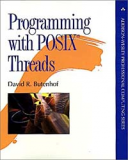Книга: Programming with POSIX® Threads
3.2.3 Using mutexes for atomicity
3.2.3 Using mutexes for atomicity
Invariants, as we saw in Section 3.1, are statements about your program that must always be true. But we also saw that invariants probably aren't always true, and many can't be. To be always true, data composing an invariant must be modified atomically. Yet it is rarely possible to make multiple changes to a program state atomically. It may not even be possible to guarantee that a single change is made atomically, without substantial knowledge of the hardware and architecture and control over the executed instructions.
"Atomic" means indivisible. But most of the time,we just mean that threads don't see things that would confuse them.
Although some hardware will allow you to set an array element and increment the array index in a single instruction that cannot be interrupted, most won't. Most compilers don't let you control the code to that level of detail even if the hardware can do it, and who wants to write in assembler unless it is really important? And, more importantly, most interesting invariants are more complicated than that.
By "atomic," we really mean only that other threads can't accidentally find invariants broken (in intermediate and inconsistent states), even when the threads are running simultaneously on separate processors. There are two basic ways to do that when the hardware doesn't support making the operation indivisible and noninterruptable. One is to detect that you're looking at a broken invariant and try again, or reconstruct the original state. That's hard to do reliably unless you know a lot about the processor architecture and are willing to design nonportable code.
When there is no way to enlist true atomicity in your cause, you need to create your own synchronization. Atomicity is nice, but synchronization will do just as well in most cases. So when you need to update an array element and the index variable atomically, just perform the operation while a mutex is locked.
Whether or not the store and increment operations are performed indivisibly and noninterruptably by the hardware, you know that no cooperating thread can peek until you're done. The transaction is, for all practical purposes, "atomic." The key, of course, is the word "cooperating." Any thread that is sensitive to the invariant must use the same mutex before modifying or examining the state of the invariant.
- Forced writes - палка о двух концах
- Forced Writes
- Chapter 15. Graphical User Interfaces for Iptables
- What NAT is used for and basic terms and expressions
- Caveats using NAT
- Using Double Quotes to Resolve Variables in Strings with Embedded Spaces
- Information request
- SCTP Generic header format
- System tools used for debugging
- FORWARD chain
- How to use this License for your documents
- 1. TERMS AND CONDITIONS FOR COPYING, DISTRIBUTION AND MODIFICATION




